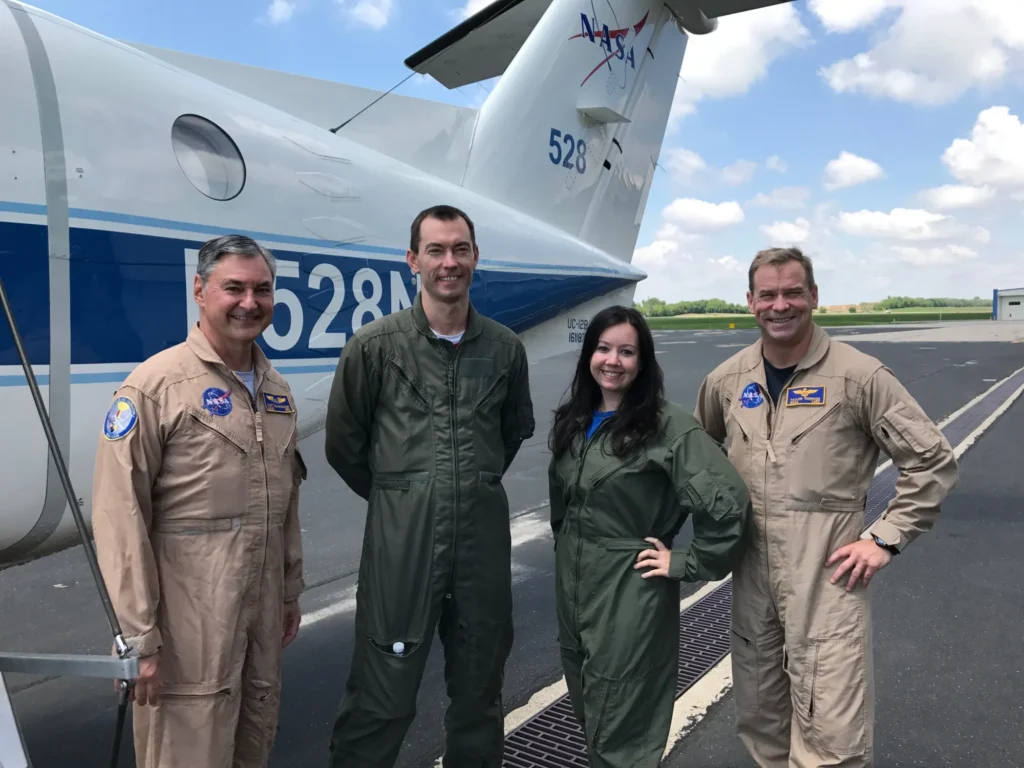Matthew Kowalewski: Aerospace Engineer and Curious About Everything

Matthew Kowalewski describes himself as “curious about too many things,” but that curiosity comes in handy when engineering instrumentation scheduled to soar through the atmosphere of a moon of Saturn.
Name: Matthew Kowalewski
Title: Dragonfly Mass Spectrometer (DraMS) Lead Instrument Systems Engineer
Formal Job Classification: Aerospace Engineer
Organization: Instrument and Payload Systems Engineering Branch (Code 592)
What do you do and what is most interesting about your role here at Goddard?
As the DraMS lead instrument systems engineer for NASA’s Dragonfly mission, I lead the coordinated technical development, integrating systems and making sure communications across subsystems is maintained within the instruments as well as with the lander. I enjoy the diversity and complexity of this instrument.
What do you enjoy most about your current position as the DraMS lead instrument systems engineer?
I started this position in March 2023 and it has been like drinking from a fire hose ever since, but in a good way. The complexity of the instrument and the number of subsystems means this is really three separate instruments in one, and that makes my job exciting. I have to keep up with a range of disciplines across everything that Goddard does including mechanisms, lasers, mass spectrometers, gas flow systems, mechanical systems, thermal systems and electrical systems.
I am always challenged and excited by those challenges too. Everything we do is necessary to meet the broad science requirements. Our goal is studying prebiotic chemistry on the surface of Titan.
What is your educational background? Why did you become an aerospace engineer?
I have a B.A. in astronomy and physics from Boston University and a master’s in physics from Johns Hopkins University.
As a child, I was more interested in astronomy and physics. In college, I developed an extreme interest in experimental physics including the engineering required to perform these experiments.
How did you come to Goddard?
After college, I worked in missile defense for a private company supporting the Midcourse Space Experiment. After three years, in 1998, my wife and I wanted to move closer to family, so I came to Goddard as an instrument engineer supporting the Total Ozone Mapping Spectrometer-Earth Probe (TOMS/EP) mission. I have also supported the Ozone Monitoring Instrument on Aura, The Ozone Mapping Profiler Suite (OMPS) on Suomi NPP and JPSS, various airborne field campaigns, and the New Opportunities Office.
What interesting field work did you do prior to joining DraMS?
I largely did field work supporting Earth science research and new business development. We flew remote sensing instruments on high altitude aircraft in the United States, Costa Rica, South Korea [whose official name is the Republic of Korea], and Canada. Most field campaigns lasted about a month where we were housed in hotels or military bases. While supporting the New Opportunities Office, we developed instrument and mission concepts…
